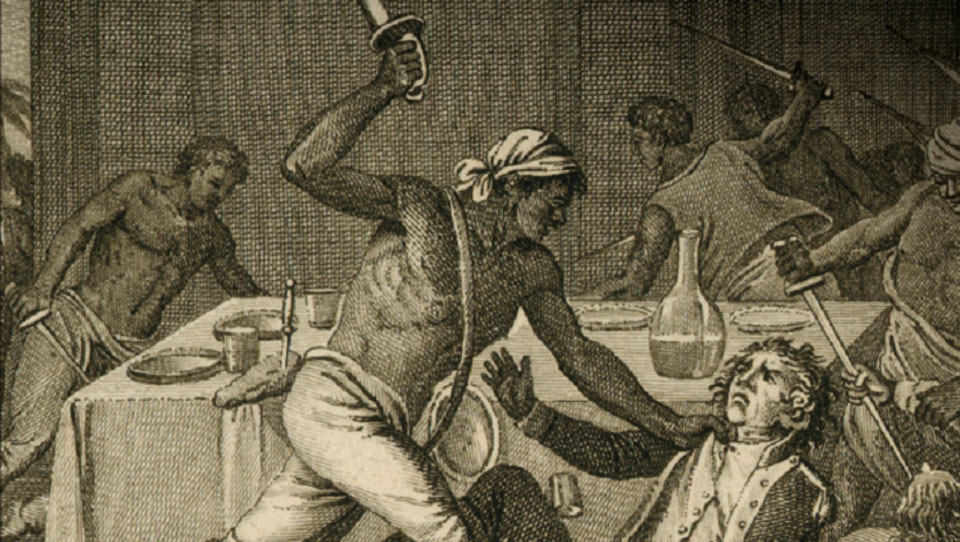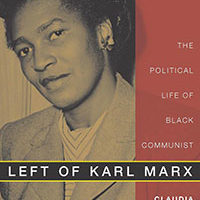
WASHINGTON–The ‘so-called’ American Revolution of 1776 was not a bourgeois-democratic uprising for liberty as the common view would have it. Instead, it was a settler-colonialist revolt, a reactionary event aimed at blocking the impending abolition of slavery. That according to radical historian Gerald Horne, who is challenging both mainstream as well as traditional Marxist narratives about the founding of the United States.
Horne presented his views at a July 14 webinar hosted by the Claudia Jones School for Political Education in Washington, D.C. The event was focused on the role of Black Americans in the Communist Party USA in the struggle for freedom and liberation. Horne holds the Rebecca Moores Professorship of History and African American Studies at the University of Houston and is the author of over thirty books.
His opening remarks set the context for discussion, as he presented the arguments about the African slave trade and settler colonialism which are at the heart of his recent books, The Dawning of the Apocalypse: The Roots of Slavery, White Supremacy, Settler Colonialism, and Capitalism in the Long Sixteenth Century and The Counter-Revolution of 1776: Slave Resistance and the Origins of the United States of America. He began by talking about one of the bloodiest slave revolts, known as the Stono Rebellion, which was a collaboration of enslaved Angolans in South Carolina and Black soldiers in Spanish Florida in 1739.
Horne then shifted focus to the uprising in British North America of 1776, an event which many celebrate as what he described as the ‘so-called’ American Revolution. For over a century, prominent Marxists ranging from Lenin to Ho Chi Minh to CPUSA historian Herbert Aptheker have viewed the American Revolution as a bourgeois-democratic revolution that advanced the cause of liberty, as incomplete and flawed as it was. Horne is part of a trend among historians that argues the event was actually a colonial settlers’ revolt, or even a counter-revolution against the threat of slavery’s abolition.
His work makes the case that the “revolution” of 1776 was not an instance of class collaboration between the African slaves and white slave owners against British domination. As an example, he cites an instance during the War of 1812 in which enslaved Africans in what is now known as the District of Columbia helped the British redcoats burn down the city, “sending James Madison running into the streets,” Horne said. Enslaved Africans then escaped on British boats to what is now known as Trinidad and Tobago.
Horne said he wants to challenge some “usual Marxist thinking” when it comes to 1776. In characterizing it as a settler revolt, he compared it to the settler revolt that took place in Zimbabwe in 1965, led by Ian Smith. That white settler-colonialist revolt, he argues, looked toward the American Revolution of 1776 for inspiration. He also brought up the settler revolt of the late 1950s of Algeria, which aimed at toppling the regime of Paris.
And then, Horne asked, “What about the Africans that did not support George Washington?” He brought up the 1790s slave trade to Cuba and 1840s slave trade to Brazil, noting that the Africans did not support the settlers, emphasizing again that this was not a class collaborationist project between the African slaves and the white slave owners.

Horne then put this into the context of Black internationalism and the founding of the Communist Party USA in the early 20th century. For example, after the Sixth Comintern Congress in 1928, the CPUSA adopted the Black Belt Thesis with the help of Black Communists and other Communists from around the world. It held that Black people in the United States constituted a “nation” with the right to self-determination, up to and including breaking away from the U.S. Horne also highlighted the defense of the Scottsboro Nine, led by the International Labor Defense. In the early 1930s, the ILD, which was associated with the CPUSA, built a global network and international campaign to save the nine defendants’ lives. These efforts led to a large influx of Black members into the Communist Party.
The Red Scare—the postwar period in which the U.S. government and its enablers targeted Communists, labor activists, and others through surveillance, red-baiting, violence, and imprisonment—brought fresh repression too for those who fought against the U.S.’ grotesque anti-Blackness and Jim Crow apartheid (which continued while the country was supposedly fighting for “freedom and democracy” elsewhere in the world). This Cold War hysteria led to Black Communist leaders such as William L. Patterson, Ben Davis, Jr., Claudia Jones, W.E.B. Du Bois, and many others to be jailed, have their passports revoked, be deported, and face other repressive measures.
Horne noted that incremental wins such as Brown v. Board of Education were achieved at this time, even while militant Communist leaders were being removed from labor unions. This weakening of the labor movement subsequently led to an erosion in people’s incomes, and Black Communist leaders were being distanced from in the Black freedom movement. So as the Civil Rights Movement was scoring some victories, there were simultaneous setbacks. “People could not pay their check at the dinner table due to the attack on unions and Communists,” Horne said. “We are still under this contradiction today along with the legacy of slavery.”
Throughout the rest of the event, Horne discussed the many Black Communist leaders whom he’s written about, including Ben Davis, Jr., Shirley Graham and W.E.B. Du Bois, William L. Patterson, and Ferdinand Smith. Horne then concluded his talk by saying that “the role of Black Communists in the 20th century is essential” for not only understanding our past but for charting today’s strategies for struggle as well. Beginning with the Scottsboro Case and the organizing of trade unions like those in the CIO, the experience of Black Communists lends itself to plotting our escape from Trumpism today.
Finally, Horne said, “the promissory note that Martin Luther King, Jr. talked about needs to be acknowledged and paid.” He emphasized that the work of Black Communists is not just a historical relic. “We will also need the activism of Black Communists today that are leading in the footsteps of these folks who came before us.” Horne ended by saying he wants to believe that the trend of anti-communism is dissipating, which is something that can only help the movements fighting for justice today. “The killing of George Floyd has engendered us to fight for anti-imperialism, which has the knock-down effect of ending anti-communism.”
In discussion with attendees and in response to questions, Horne went on to stress the need to build peace, international solidarity, and anti-imperialist forces in the current moment. He argued for the “need to get our forces in the Organization of American States to file a motion on systemic racism to strengthen our forces from within that organization.” He called for doing anything possible to weaken “the antagonists” in that U.S.-dominated organization, which is often used for imperialist purposes in Latin America.
Returning again to the discussion of settler-colonialism, Horne even proposed there was a need to re-think even our progressive anthems within that context. For example, Woody Guthrie’s famous “This Land Is Your Land,” Horne argues, should be changed to “This Land Is Their Land and this is a settler colonial project.” There has yet to be justice, he noted, for the indigenous peoples of this land, even if there have been small wins, such as the Washington Football Team dropping its racist name and the recent Supreme Court ruling on Native lands in Oklahoma.
Questions from participants also took the conversation into the topic of how whiteness has been constructed throughout history. “How was it that Spain, which did not necessarily dominate this part of North America, and how was it that England come from behind to surge ahead to cause us here to speak their language?” The short answer, according to Horne, is that “in the era of religious conflict,” the pan-European colonial project “morphed into whiteness and into white supremacy.”
That, in turn, eventually leads to 1776––which Horne argues was a great leap backwards for the indigenous and African population. “That is how seductive whiteness has been—even those that consider themselves progressives still prey to its alter!” Horne exclaimed.
Scenes from the event can be found on the Claudia Jones School for Political Education’s YouTube page.










